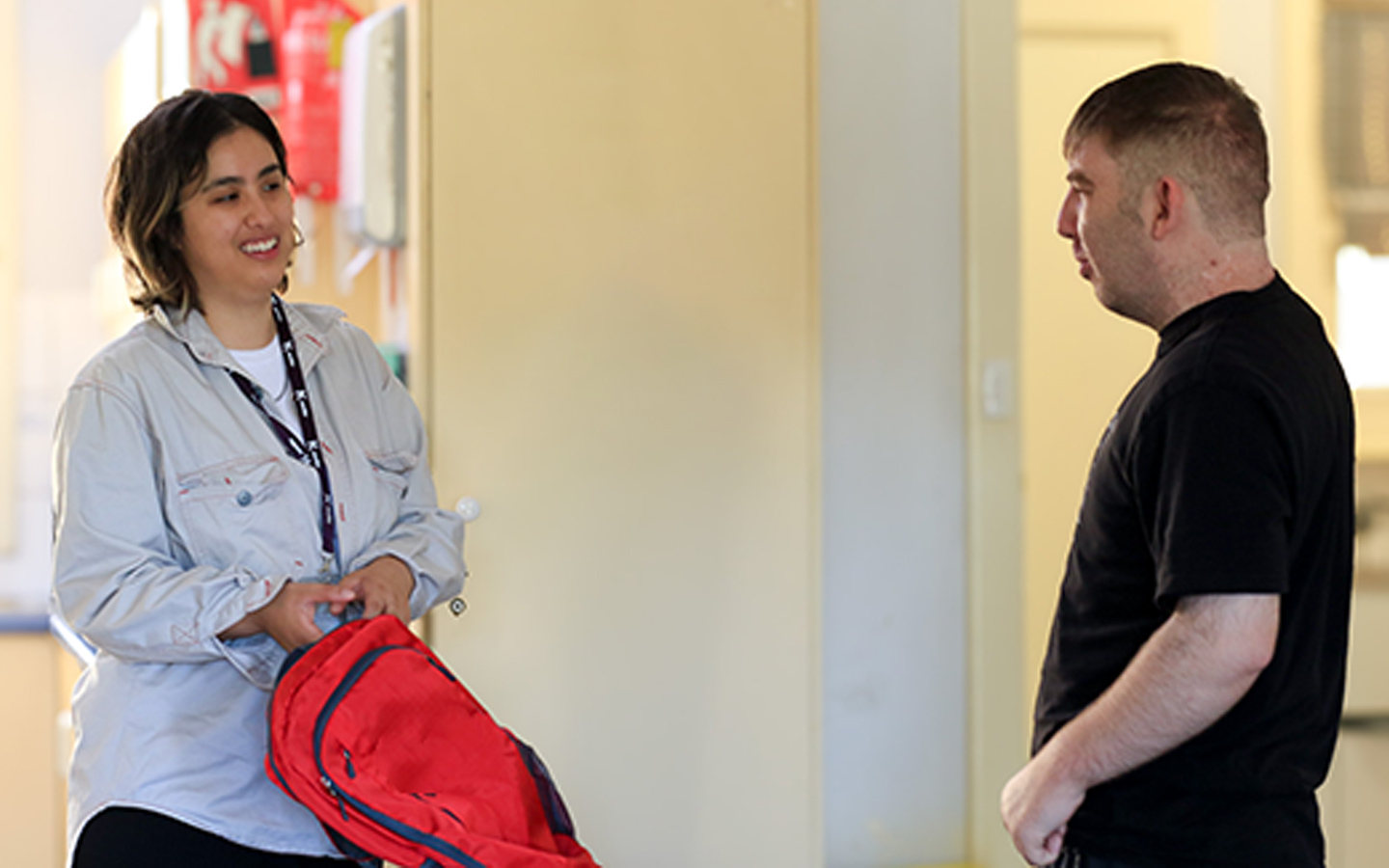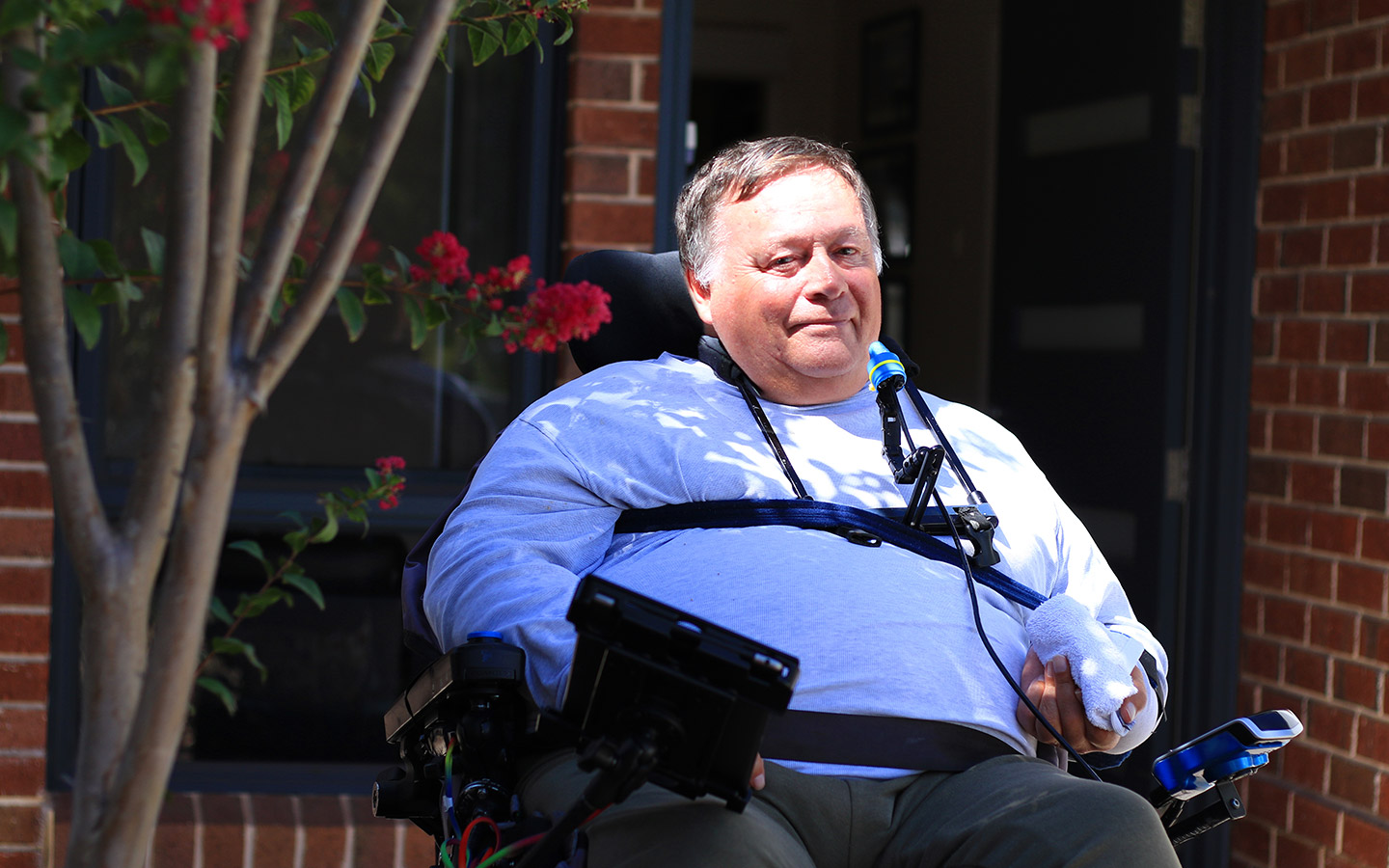Helpful Information
How to prepare for the gym when you live with disability
access_time23min read
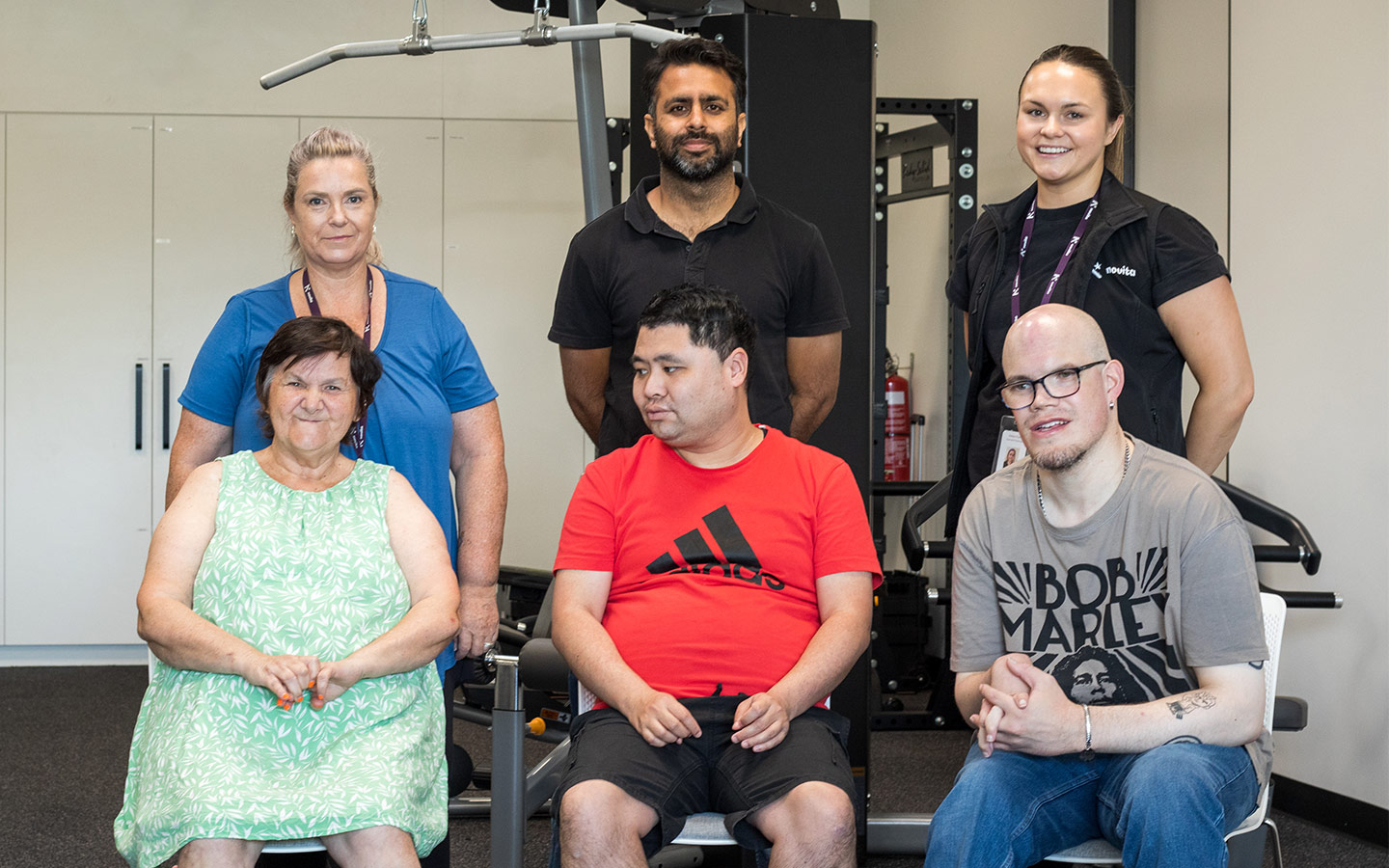
Preparing to join the gym can take time, energy and a lot of preparation. Although exercise is an excellent way to keep both physically and mentally healthy, we understand that there are many steps involved to feel confident and strong enough to find a gym and routine that suits you. Many of our clients share that they would like to be more physically active and regularly work with their therapy team to achieve their goals in a supportive and encouraging setting. As an organisation, it is important for us to collaborate with clients to create positive and healthy lifestyles with their needs and input in mind.
In this article, we share the top tips from our therapy team about the importance of exercise, how to set goals and build a realistic routine, and finding a gym that is accessible and catered to your needs. Ready, set, go, your exercise journey awaits!
Before we get started, here are some important benefits of exercise:
- Physical health – exercise can improve physical health, strengthening of important muscles and coordination (this is particularly helpful for people with cerebral palsy)
- Mental health – by regularly working out, your brain will release feelings of happiness (this is called an endorphin). Depression, anxiety and stress can also be reduced by participating in exercise.
- Meeting new friends – joining a gym is a great way to meet new friends and build a community. Many locations offer regular classes and opportunities to meet different people.
- Gaining independence – the gym can encourage people to build independence by providing a regular routine and structure. Getting out of the house for some exercise is always a benefit!
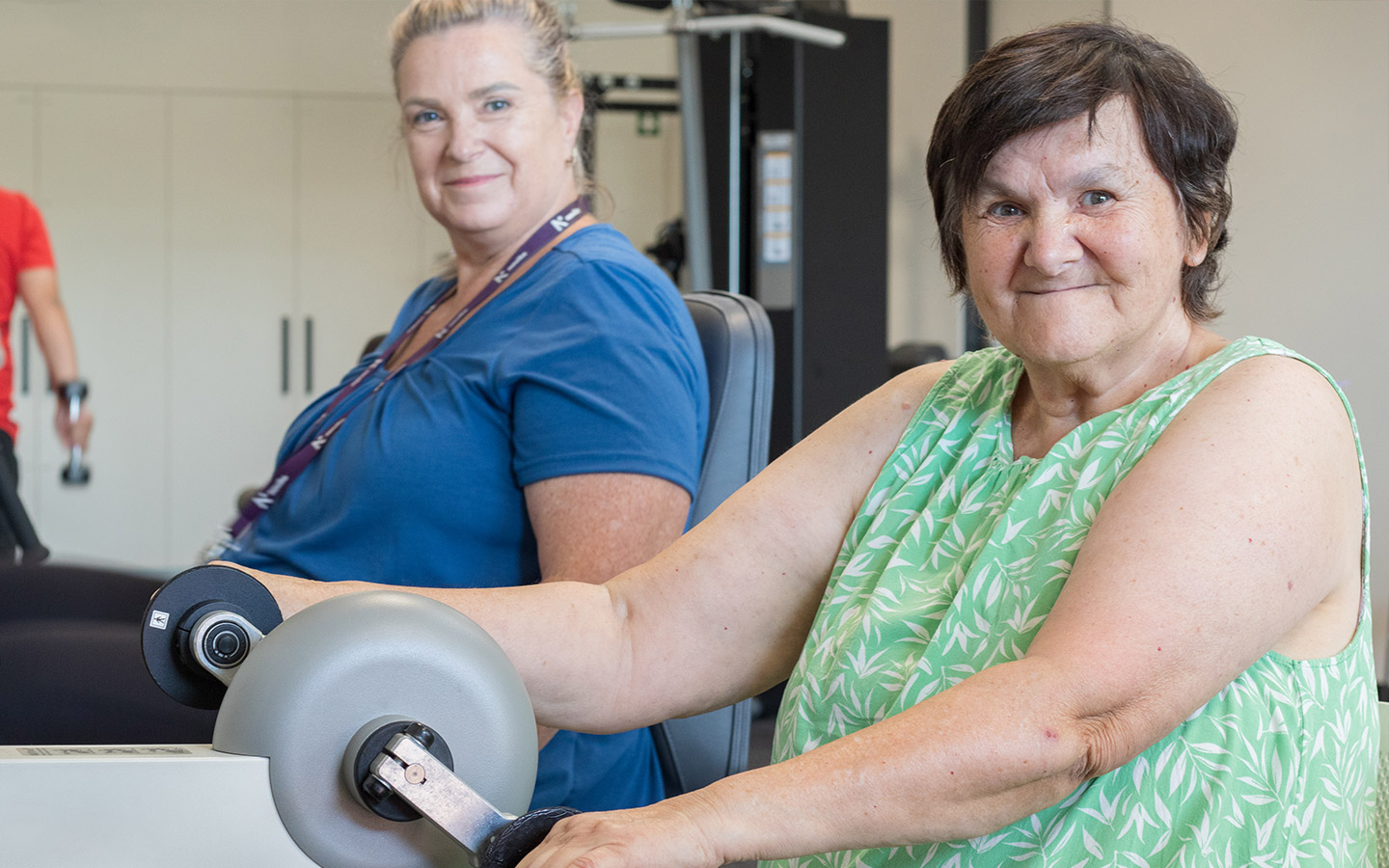
Step one:
Building confidence before going to the gym
One of the most common questions we get asked is ‘where do I start?’
A lot of people struggle with confidence before joining a gym because of the stress and anxiety about other people, not being strong enough and feeling uncomfortable with the machines.
Common fears include:
- people will be watching and laughing,
- the exercises will be too difficult, and
- not being strong or fit enough.
To overcome some of these, we recommend asking your therapy team for support. Building confidence could be as simple as practicing exercises with your therapist or having a chat about some methods to feel more comfortable when trying new things.
Start off slow!
We recommend that people start off slowly and ease into their new routines. Jumping into something can be quite overwhelming and disruptive to your lifestyle. Maybe do one to two sessions a week to start, see if you enjoy it and gradually bump these up. There’s no point going every day if you’re not ready. Setting realistic goals is also important. Work with your therapy team to do this and cater exercise to your body, not what others are doing. If you work against your body, this can often end up in injury and long periods away from the gym. Remember, no one else is looking at you and are most likely focusing on their own training, so there’s no reason to feel self-conscious or embarrassed.
Choose a training buddy
Finding a training buddy is also a great way to build confidence. Exercising with a friend or family member can boost your motivation and accountability, making workouts more consistent and enjoyable. Friends can also provide a great amount of support, positivity and encouragement when needed.
Step two:
Preparing for the gym in your therapy sessions
This can start in small bursts where you practice exercises and strengthening, then attending a gym together where you can work on what you learned in session.
How your team can work with you:
With your exercise physiologist and physiotherapist, you can work on:
- strengthening core muscles,
- working on balance,
- setting realistic goals,
- adding modifications or assistive equipment where needed, and
- building motivation to exercise.
With your occupational therapist you can work on:
- building mental and physical confidence,
- gaining independence about your exercise routine,
- finding a location that you can travel to and from with ease,
- building confidence in a gym setting, and
- recommending assistive devices or adaptive movements.
Setting goals
When working with your therapy team, you will be encouraged to set clear, achievable goals. These should align with your abilities and fitness aspirations. Some examples include:
- increasing strength (i.e., lifting heavier weights or doing more complicated body weight exercises),
- boosting your confidence and self-esteem,
- managing chronic pain or discomfort from your disability,
- enhancing flexibility and mobility (i.e., learning stretching or improving your posture), and
- improving endurance (i.e., running, walking or wheeling for a longer duration)
Your physiotherapist, occupational therapist, or exercise physiologist can help you set realistic goals. They will then design an exercise program suited to your individual needs. They can also show you how to use the equipment and what exercises work best for your body.
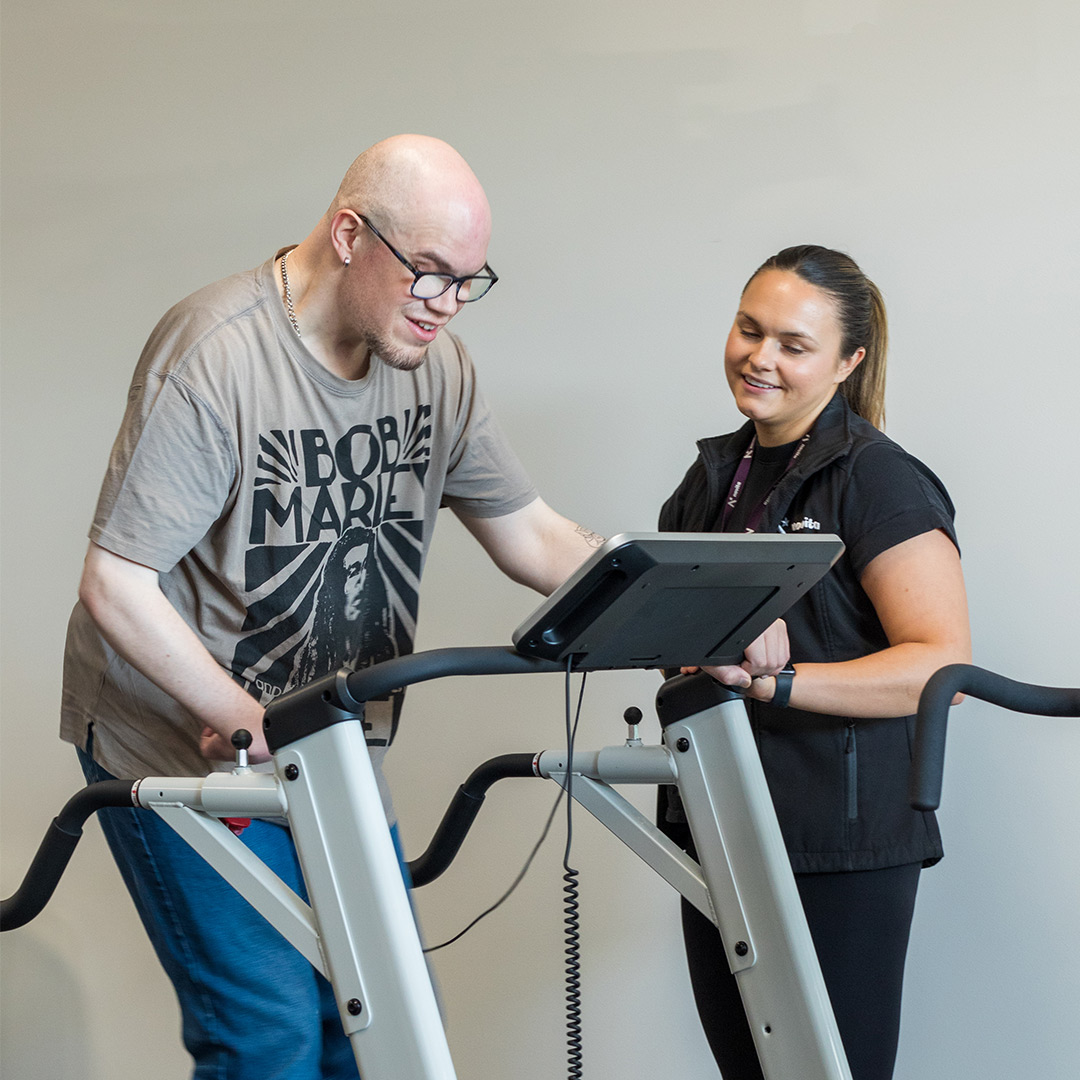
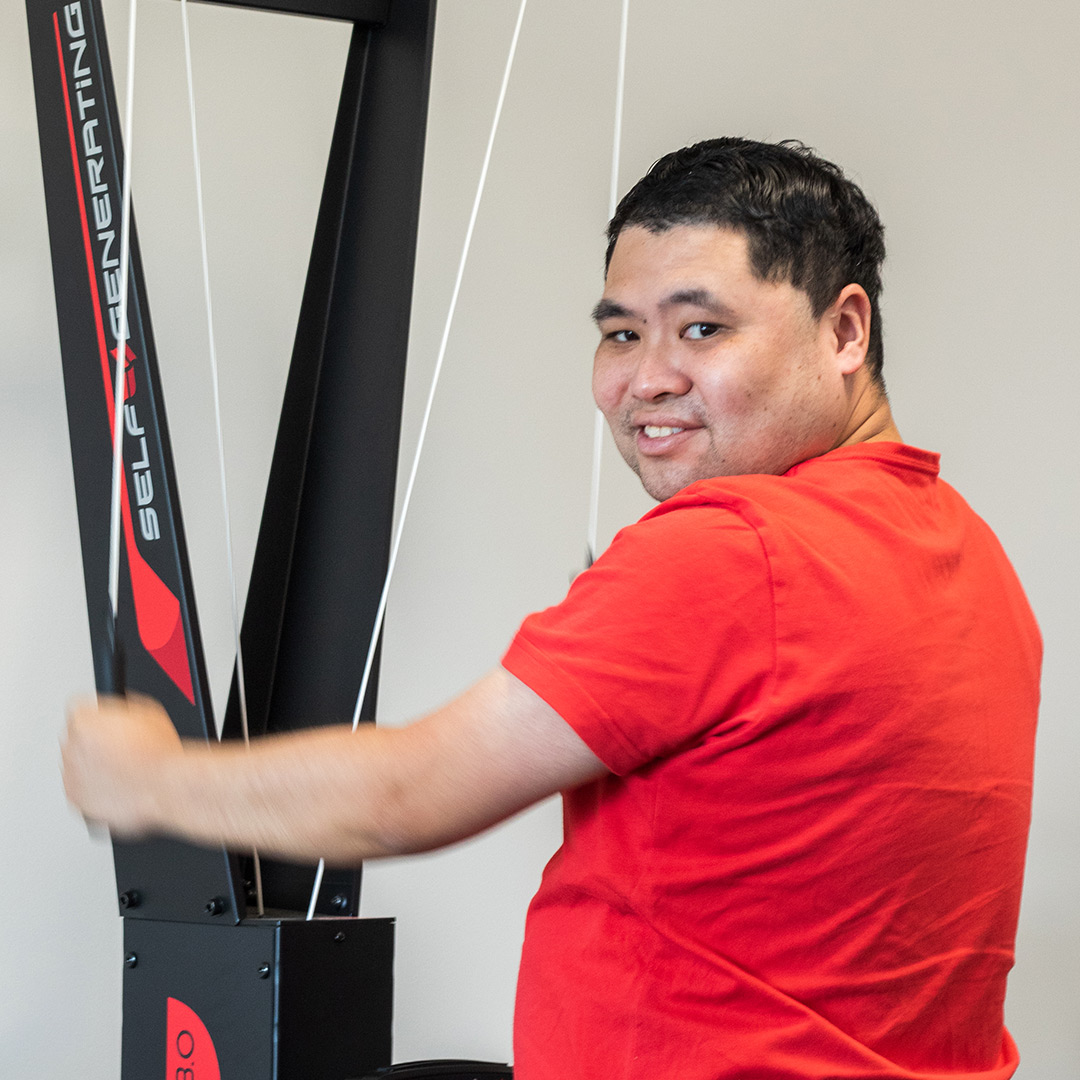
Step three:
Creating an exercise plan
When putting together your exercise plan, you should consider what you want to achieve. Do you want to start running, swimming or strengthen your muscles for everyday activities like typing or writing? Ensure you are clear with your goals so that you can create a plan that can benefit you.
Here are some things you could put in your plan:
- your exercise goals and what you want to achieve physically and mentally (Whether it’s improving strength, balance, or endurance, having clear aspirations will keep you on track to stay motivated and track your progress.),
- exercises you enjoy and want to work on (i.e., running, swimming, dancing),
- what kind of routine do you want, and
- where you want to be in a few months.
- We recommend starting slowly with low-intensity exercises and gradually increasing the intensity as you become more comfortable. Pay attention to how your body responds and adjust your exercises as needed to avoid injury. Practicing exercises in a controlled environment during therapy sessions can build self-esteem when transitioning to the gym.
How to create a routine
After putting your exercise plan together, we recommend working with your therapy team to build an easy to follow and consistent routine before you start at the gym. Your routine should be designed to support your goals and exercise plan. Here is a rough guide you can follow when building a routine:
- setting a regular schedule with manageable workout durations catered to your physical and mental needs,
- adding a variety of activities to stay motivated (i.e., on Mondays you could do cardio and Wednesdays could be strength training),
- adding time for stretching and warming up so your body is prepared for vigorous exercise, and
- asking for accountability from your therapy team – this could be through weekly check ins to see how you are doing.
Tracking your progress
Tracking your progress is an excellent way to stay motivated, celebrate your wins, and ensure sure your routine is working for you. Your progress would be gradual, and results can often take some time to show, so don’t feel bad if you don’t achieve what you set out to straightaway! Here are some tips to track your progress:
- Installing an app or tracker – apps like Apple Health, Google Fit, Strava, Garmin Connect and Runna sync with smart watches and devices to track your work outs and provide you with live statistics. You can use these reports to see how you’re improving and work towards your goals,
- Using a fitness diary – a fitness diary can allow you to stay accountable and reflect on what you want to achieve (remember, this can change!) After each session, you can write about what you’ve done at the gym and how you were feeling. The diary can allow you to check in with yourself and see how you’re doing. It is also a great way to track your health and energy levels including work out routines, what you’re eating and when you’re getting sleep,
- Checking in with your therapy team – after a few sessions, you should check in with your therapy team to go over your exercise plan to see if you want to make any changes. You can also use these check ins to discuss and assess improvements in your movement, strength, or endurance, add any modifications you need and keep accountable with your routine.
Progress is an inevitable part of your exercise journey! Celebrate your wins and don’t be too hard on yourself if you’re not improving as quickly as you anticipated — it all takes time and energy to get to where you want to be. Tracking your progress will support you to stay accountable, stick to your routine and remind yourself that you are working towards important goals.
Step four:
Finding a place that suits you
Not all gyms are accessible for people with disability. When choosing a gym (with support from your therapy team), you need to look for facilities and features that will allow you to make progress in a safe and comfortable setting.
We recommend looking for features including:
- ramps,
- wide doorways,
- accessible and adaptable equipment: machines that can be used from a seated position or with one hand,
- accessible entrances and exits, ramps, wide doors and accessible parking,
- quiet and sensory areas,
- accessible toilets and changerooms,
- clear signage – including Braille and tactile options, and
- knowledgeable staff who have experience of working with people with disability.
Accessible gyms in Adelaide
Here are a few places we recommend:
- Co-able fitness – a health, wellness and fitness hub located designed for people of all abilities and accessibility.
- Access Fitness – was created specifically for people with permanent or temporary disability. It has been custom designed with wheelchair and disability accessible equipment, combined with a physiotherapy treatment facility
- Enable fitness centre – a registered NDIS provider with specialist disability gyms and facilities for wheelchair users and ambulant clients with both physical and intellectual impairment
- Empower Gym – a registered NDIS provider with physiotherapy options and accessible equipment and facilities
- Sporting Wheelies – an adaptive gym designed to cater for people’s individual needs and with a focus on spinal injuries
- Gymclusion – a specialised exercise and therapy facility designed for children with autism and sensory sensitivities
At the end of the day, choosing the right gym is entirely up to you! Finding the best facility takes time, patience and a lot of research. While we have provided you with some options, ultimately, you should choose a program and location where you can work towards your exercise goals.
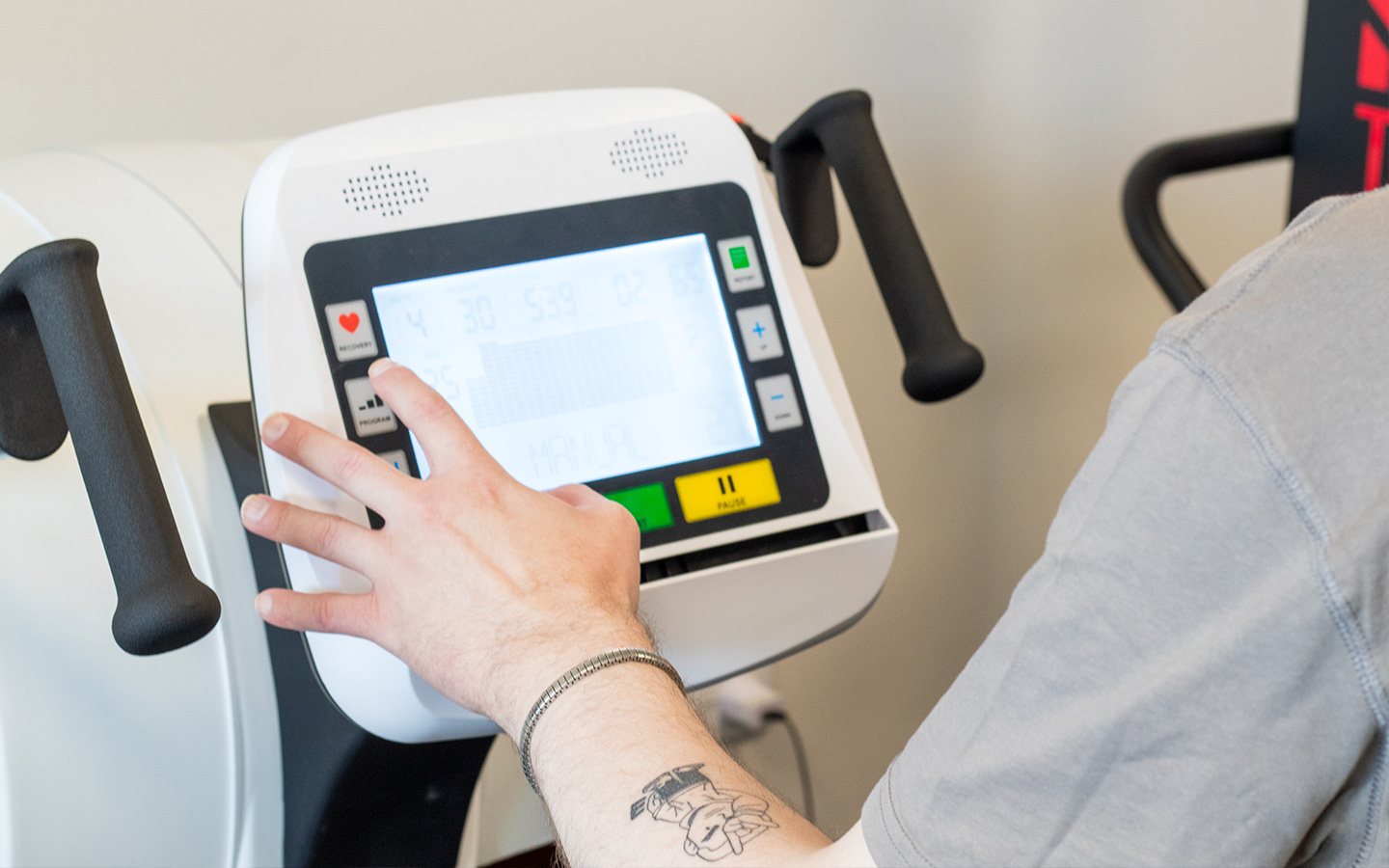
Step five:
Packing your gym bag
Wearing the right clothes to the gym is important for everyone because it makes the session comfortable, supports movement, and importantly adds a level of safety, especially footwear and gloves. Breathable, stretchy fabrics allow for easy movement, while well-fitted shoes provide support and stability. Adaptive clothing can make getting dressed easier as well, ensuring a hassle-free workout.
When packing a gym bag, remember to include:
- FOB key or access card
- Comfortable workout clothes
- Supportive footwear
- Water bottle
- Towel
- Assistive devices (leg braces, gloves, or any needed mobility aids)
- Medications (any required before, during, or after the workout)
- Snacks (like a banana or protein shake)
- Earphones or music device
Having everything ready makes gym sessions smoother and more enjoyable!
Step six:
Involving your therapy team when you get started
Once you’ve selected a gym and feel ready to start attending, you should work with your therapy team about communicating any issues and concerns to staff. We also recommend talking to them about how to communicate when you need help. By involving your therapy team, you will feel more comfortable when dealing with tricky situations (i.e., asking for help, asking to use a machine and getting someone to spot you). They will also give you tips so you can introduce yourself to staff to communicate your needs and goals.
Some good questions to consider are:
- where can I get help if there’s an emergency?
- who can I talk to if I feel unsure about an exercise?
- how do I use a particular machine/complete a certain exercise?
As we stated above, you can also ask your therapy team to join you in your first few sessions. This can support you to work on your exercise plan and gain initial confidence when working out. Who knows, maybe they can take a few photos for your Instagram to show off those gains!
Step seven:
How can we support you to prepare for the gym
Many of our clients share similar ambitions to get fit and healthy. We regularly work with people to cater to their individual needs and ambitions. Our one-on-one training offers personalised sessions for people to strengthen their muscles and ramp up their fitness. Clients enjoy one-on-one sessions because they can talk about their goals with their therapist and see what kind of exercise suits their body. We also offer adaptive exercise programs tailored to individual needs, focusing on improving strength, flexibility and overall health. Our team can offer suitable alternatives for almost anything and many people enjoy still being able to participate in activities they enjoy. Therapy groups are also a great ‘first start’ before joining a gym officially. In these classes, clients can meet other people with likeminded experience and exercise in a safe and comfortable environment.
Congratulations on preparing to go to the gym! You are one step forward to being a healthier and happier version of yourself. Although preparing can take a while (especially when you need to find a facility to suit your needs), it’s ultimately worth the effort. Seeing the gains, progress and results are totally worth the wait.
For more information about staying active, how we can support your journey and create an individualised exercise plan to cater to your needs and goals, call us on 1300 668 482 or email us at [email protected]
